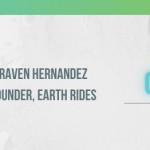Background:
Dr. Elizabeth A. Kocs
- Director, Partnerships & Strategy, University of Illinois at Chicago (UIC) Energy Initiative Adjunct Faculty, CUPPA & Faculty Fellow, Honors College
- Co-Founder, Center for Urban Resilience and Environmental Sustainability
- DPI Affiliate, Discovery Partners Institute
- NREL Energy Executive, National Renewable Energy Laboratory
- In addition, she earned a Bachelor’s degree in architecture from Pratt Institute; a Doctor of Philosophy from City University of New York (CUNY) with a focus on Environmental Psychology, and an MBA from the University of Illinois at Urbana-Champaign.
What path led you to WCS and prompted you to join?
I learned about WCS through one of my contacts at WRISE. The mission of WCS aligns with much of the work I’m doing and I’m really fascinated by the forward-thinking work of California’s clean tech leaders. Being from the Midwest and originally the East Coast, I thrive in progressive environments. California has certainly been leading in many efforts when it comes to clean energy and clean transportation. Since my entire career is centered around environmental sustainability, WCS is a great fit.
What advice can you offer to our members?
Impatience is a good thing! Do not be patient at all, that is, if you want to see changes. Many countries around the world are aiming for net zero by 2050, with the goals they’ve set in place. Unfortunately, they will not get there. It will be closer to 2070, and only if aggressive action is taken in the next 10 years. So my advice – don’t be patient, look for solutions; find them; invest in them and put your personal efforts, motivation and passion for clean tech and energy into working on solutions. New technologies are central for developing clean solutions.
You’ve been informally identified as being the hub of “All Things Energy” in Chicago, how does it feel?
One of my strengths is being the holder of relationships. People come to me and ask “Do you know anybody that working in XYZ or does such and such and with whom you can connect me?” It is very rare that I don’t know someone within my own network or someone who knows someone else. My network, both the depth and breadth of it, empowers me with valuable insight across different sectors in clean energy and sustainability.
I also enjoy being that point person because it allows me to help others through my connections, taking the focus off me. Through connecting others, I make sure that voices are heard. I also enjoy supporting and promoting other women, especially young women in energy and sustainability, so they have a good foothold starting their careers.
And is that because not enough women focus on the sciences?
There is a gap. Many women start out in undergraduate work in science. They may even go into graduate work. Once they get to the postdoc level, the percentage of women start falling. In engineering and the sciences, huge gaps continue to exist. In order to bridge that gap, you need clusters of women entering each discipline, to address the structural weaknesses. By bringing women scientists and engineers in as a cluster, it helps them grow together as a community.
For women in academia, getting a foothold as a community is the strongest pathway to breaking down the gender gap. Clusters of women within disciplines, organizations, institutions and corporations are needed throughout a woman’s career – from early to mid and even late-career. This ensures the pipeline does not break.
What pushes your buttons – your passion buttons – with regard to the sub sections of energy and sustainability?
In my recent TEDxUofIChicago Countdown talk, I show an image of a parade in New York City in 1900, where all vehicles were horse drawn carriages, except for one single automobile. Then, in 1913, at the same annual parade on the same street, it was all automobiles and only one horse drawn carriage. In 13 years, the entire transportation sector changed. So change like this is possible in the next 10 years.
I’ve recently been involved in transportation electrification and sustainable mobility. Achieving clean transportation has a critical 10 year marker for change and for reaching a tipping point to eliminate transportation emissions.
Transportation emissions cannot be solved by technology alone. Policies are needed to advance technologies. California is a great example of policies leading technological innovation and market change. Many other states are laggers or followers – meaning they are waiting for the market to move first. They are waiting to see what California and the West Coast, and New York and the East Coast does, and then let the market drive the change. Given the impact of transportation related GHG emissions, investments in clean transportation need to happen now. We should not wait for the market to drive it years later.
Also, changes need to happen at all levels and in every state. Support from policy, legislation, regulators, nonprofit, public sector and private sector can drive the change. Everyone needs to be on the same path, and R&D investments in new and clean tech solutions are needed to advance the market.
Let’s talk about partnerships because that’s what’s going to make things move forward, right?
Absolutely. One example from this year is the over 400 stakeholders that participated in the transportation electrification workshops I held. A key consideration from the workshops and the forthcoming report is the central and pivotal role of partnerships. Transportation electrification cannot and should be done alone. Beyond resources, all stakeholders have a role and a stake in a cleaner transportation future. My forthcoming EV Workshop Framework report will highlight the importance of a state level plan and will provide guiding principles for beneficial electrification of transportation in Illinois.
Regionally speaking, are you seeing traditional energy institutions pivot towards lower carbon energy sources?
Certain industries are changing. Utilities, for example. Many utilities are advocating for transportation electrification and their role in deploying EV charging infrastructure. They not only have the knowledge of locational advantages to deployment, but EV’s also provide many grid benefits including managed charging, charging off peak, and additional revenues that can be reinvested in grid modernization and to strengthen the grid.
EV’s have a chicken and egg problem. More EV’s are needed on the road and at the same time EV charging infrastructure needs to be deployed.
Green buildings and smart cities are other areas of innovation. More research, development, investment and deployment is emerging in the intersection of clean transportation, the built environment and smart cities.
I understand you are involved in regional micro grids.
My university itself has two micro grids comprised of two natural gas co-generation plants. We are connected to the grid and can run off grid if we wanted to, but we typically don’t. We buy electricity because it’s sometimes less expensive than running our own plants. The challenge lies in the fact that there is more coal on the grid than in our NG plants and so buying from the grid increases our carbon footprint.
There’s also a micro grid at the Illinois Institute of Technology (IIT) that is connected to the grid. Bronzeville, the neighborhood next door is another micro grid community under development. These two micro grids will allow the utility and the university to better understand the interconnections between the micro grids.
UIC has been in conversation with local developers for demonstration projects on the campus, including second life EV batteries as backup power and sustainable and shared mobility options. For the battery backup systems, it can be used as the second backup generator for the hospital on the west campus and for black start capabilities on the east campus. Campus settings are excellent opportunities for living laboratories and to test out new technologies and resources for continual improvement and to support R&D.
So Chicago is known as the Windy City; is there a role for wind power in Chicago?
UIC has a 28 story building with only open campus grounds and 3-4 story buildings near it. The wind rolls down the 28 story structure and pushes off the building at the ground level, leaving a challenging walk to and from the building on windy days. The wind literally pushes pedestrians away from the building. It would be great to find a way to capture and use the wind for our renewable goals. In fact, one student in recent years proposed using small wind turbines in a covered 5 story high tunnel between two large laboratory building to light the areas. Chicago is also uniquely positioned on Lake Michigan to develop offshore wind farms and provide local renewable energy to our lakefront communities. Offshore wind has been discussed for a number of decades for the Chicago area. The pushback tends to be at the community level for aesthetic reasons.
Okay. Nice work around micro grids. Now let’s talk about the Energy Initiative.
The Energy Initiative started about 11 years ago. We are a small group, and we run a number of programs, curriculum and research through the university and our partners. We are known for our convergent work on energy and sustainability.
I’m an environment and behavior scientist. I have degrees in architecture, an MBA and a PhD in environment behavioral science. I bring policy, planning, and sustainability expertise and approaches. Much of my work centers on stakeholder engagement — converging people and dialogues around specific topics, ensuring voices are heard and developing next steps. We have a strong connection with Argonne National Laboratory through the Joint Center for Energy Storage Research, which looks at beyond lithium ion batteries. They serve as an extension of our research network and partnership.
Let’s hear your big picture. What are your thoughts on the future of the earth and what to advise people?
It cannot be done alone. Our future depends on everyone. The next generation will need to make the difficult changes. For that reason, education is key to ensuring our next generation thought leaders have the tools and knowledge to make difficult decisions, are forward thinking and truly value the clean transition. Oftentimes awareness and education are the critical missing links. Many individuals don’t realize how much they’re capable of doing, even at a small scale, no matter how overwhelming climate challenges may seem. Every effort, not matter how small, makes a difference. Many small changes lead to greater change.
This reminds me of one of the most popular quotes right now by Ruth Bader Ginsburg: “Real change, enduring change, happens one step at a time.”
Yes, enduring change is on its way. We all need to help support efforts and the next generations. As I mentioned earlier, the next 10 years are critical. If we focus on combined efforts for dramatic changes in the next 10 years, then a clean transition is possible.
Interviewed by Jeanne Trombly, Writer in Residence for Women in Cleantech and Sustainability.
Author Note: Although we opted not to publish her contact info here, Dr. Kocs is happy to network and communicate with WCS members via LinkedIn as a start.




